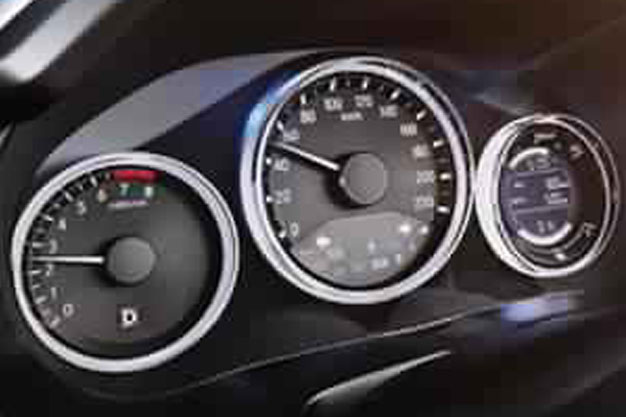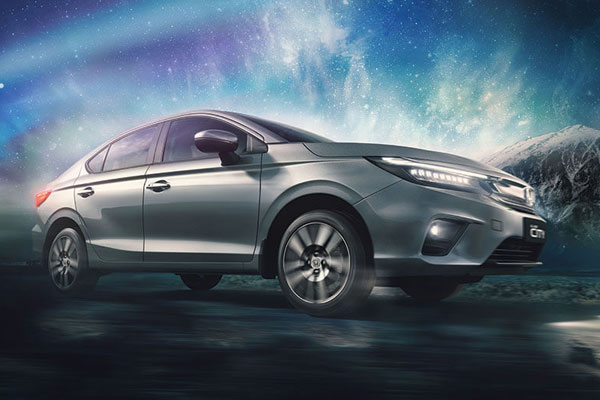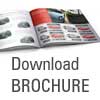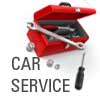40 Ways You Are Killing Your Car
If You Want to Be a Good Car Owner, Avoid These Mistakes
The moment you drive your car off the dealer's lot, it starts to lose value. The good news is that you can partly control the speed of the plunge by taking care of your new ride. By spending a bit of time and changing a few habits, you can avoid killing your car.
Not only will these tips help you to maintain the value of your vehicle, but they can also save you money at the auto shop, keep your vehicle safe, and help you avoid being stranded on the side of the road. There are lots of ways to kill your car. Most of them involve making (or letting) mechanical parts fail or doing things to wreck its resale value.
Take a look at the following slides to see some of the ways that you might be destroying your car.
1) Ignoring Warning Lights
The warning lights on your dashboard aren’t mere decoration. Each one means something, and none of them should be ignored. While a check engine light could indicate something as trivial as a loose gas cap, a brake or tire pressure monitoring system could mean a significant safety problem.
Best advice: Get it checked out as soon as possible to avoid having a small issue become a big problem. Whatever you do, don’t “solve” the problem by putting a piece of electrical tape over the light to cover it up.
2) Hitting Potholes
Sometimes hitting a pothole is unavoidable, but if you can avoid them, you should. Potholes can not only damage your tires, but they can also bend your wheels, throw your car out of alignment, and break suspension components. Potholes cause millions of dollars in vehicle damage each year.
If you can avoid routes that look like the surface of the moon, you should. If they are unavoidable, slow down before you reach the crater and gently let each wheel drop into the hole and climb smoothly out.
3) Not Regularly Changing the Oil
Engines can go longer between oil changes than they used to, but that's no excuse for not regularly having your oil changed. When your car's maintenance reminder light comes on, or you have reached the interval listed in your owners manual, it's time to get it done.
Failure to change your oil and oil filter puts your entire engine at risk of costly damage. Regularly changing it also helps to ensure that it is at the proper level. A skilled technician can also identify other issues with your engine by looking at the oil for traces of metal or water.
4) Not Paying Attention to the Maintenance Schedule
Some people believe that the maintenance schedule published in the owners manual is designed chiefly to ensure a steady income stream to the dealer’s service department. That’s not usually the case. Proper periodic maintenance is essential to replace worn parts and identify small issues before they become expensive.
An example is the timing belt that some manufacturers suggest replacing at around 60,000 miles. If that belt fails, your engine will likely self-destruct from the inside out, with bent and broken valves littering the inside of the engine block.
More and more automakers are including the first few years' service with the purchase of a vehicle, so the only investment you have to make is your time.
5) Putting Off Repairs
Repairs cost money, but putting them off can cost you even more. Delaying buying new brake pads, for example, can lead not only to safety problems but also the need to replace expensive components such as brake rotors. Not replacing a headlight can cost you the price of a traffic citation.
A cabin air filter might seem trivial, but if it gets so clogged that it stresses your heater fan until it fails, you’re going to have an expensive repair bill.
6) Not Watching Your Tire Pressure
Among the greatest causes of premature tire failure is not keeping the proper amount of air in the tires. It can also dramatically affect your vehicle’s fuel economy and handling. Fortunately, checking tire pressure is simple for you to do and should be included whenever your car is serviced.
The proper tire pressure for your vehicle is shown on a placard on the door pillar behind the driver's seat and in its owners manual. Do not refer to the maximum pressure indicated on the sidewall of the tire.
7) Not Inspecting Your Tires
Kneeling down to check tire pressure also gives you a chance to inspect your tires for uneven wear and damage, which can be a sign of other issues with your car. Uneven wear can be an indication of wheels that aren’t in alignment or other suspension problems.
It’s much safer and less expensive to get that nail pulled out of your tire at the local tire shop than it is on the side of the highway. If you don’t inspect your tires, you’ll never know what could be wrong with them until it is too late.
8) Not Using Your Emergency Brake
If you park and rely on your transmission to hold the car, you risk costly transmission damage and create a safety hazard when you don't use the parking brake. It doesn't matter if you are driving a vehicle with an automatic or manual transmission.
The parking brake is also known as the emergency brake, e-brake, or handbrake.
Even in an automatic, leaving the car in park alone can put tremendous stress on the transmission. Plus, you can forget to put the car in park, or it could pop out. The parking brake will act as a failsafe to keep the vehicle from rolling away.
There are few times that you don’t want to use the parking brake. If your brakes are extremely hot and you are on a completely level surface, using just Park or putting the car in gear could be a better choice, as pulling on the handbrake risks warping your brake rotors.
9) Not Washing It Regularly
Washing your car does more than just make it look pretty. It also gets rid of chemicals that can cause damage or rust. If you live in an area where salt is used during the winter, washing your car is a critical way to prevent rust from eating your ride’s undercarriage.
Many automated car washes feature sprayers that get water up into the vehicle's undercarriage. If you can't find one, you should do it yourself in an effort to remove as much road salt as you can.
During the spring and summer, tree sap and bird droppings left on vehicles can eat into the paint and should be removed as soon as possible.
10) Not Waxing It Regularly
Waxing your car a few times a year provides a barrier that protects its clear coat and the paint below it. It creates a sacrificial layer that takes the abuse and sheds dirt and other chemicals. Without a coat of wax, your vehicle’s clear coat will get dull over time.
Fortunately, new wax compounds are easier to apply than ever and can last longer than older products. An added bonus is that the time you spend waxing your car can also give you a chance to thoroughly inspect it for damage or abnormal wear.
11) Not Driving It Enough
One of the worst things you can do to a car is not to drive it enough. If a car sits too long, its battery will likely be dead, its gas stale, and its tires out of round. Its paint will also probably be neglected, so you'll have to budget time and money to get it back into shape.
Parking a car for a long time also invites critters to turn it into their own condo. It's better to take an occasional drive to thoroughly warm it up, get its fluids flowing, and get its battery recharged.
If you plan on letting a car sit for several months, you should prepare it for the slumber.
12) Driving It Too Much
Almost as damaging as letting a car sit too long is using it for short trips where it never has a chance to warm up and get its fluids flowing before it’s parked again. If you haven’t gone far enough to get the engine warm, you need to drive further.
If you can, manage your errands in such a way that the car has at least a few longer trips each day, instead of a series of short ones. Instead of moving it from one end of the strip mall to the other, for example, use the opportunity to take a walk.
13) Not Paying Attention to Leaks
If there’s a Technicolor soup of leaked fluids on the floor of the garage, your car is probably trying to tell you something. While a pool of clear water coming off of the air conditioning compressor is OK, anything else should be considered a warning sign.
You can tell a lot about the problem by the color and feel of the fluid. Black or brown oily feeling liquid is likely motor oil. Red liquid is often transmission or power steering fluid. Clear or brown slick liquid is commonly brake fluid. Coolant leaks are usually slimy yellow, green, or pink liquids.
Many automotive fluids are highly poisonous to pets, so even if you don’t care about your car’s health, make sure your pets don’t get near any leaked fluids.
14) Not Fixing a Cracked Windshield
Small windshield chips can often be fixed without replacing the windshield. If you let it spread into a crack, however, you’ll be looking at the cost of new glass. In most states, driving a car with a fracture or large rock chip in your line of sight can earn you a citation.
Even turning your car’s defroster on or taking it through a car wash can cause a temperature change that can make a crack worse. It’s best to pay your insurance deductible and get it fixed as soon as possible after it happens.
15) Ignoring Recalls
Not only can completing recall work make your car run better and preserve its value; it can also save your life. Most used car buyers look at vehicle history reports and open recalls on any vehicle that they are considering.
Many will not even consider a car that has not had its recalls performed.
The Takata airbag recall, for example, is so serious that many manufacturers suggest parking your car and not driving it until the recalled part is replaced.
16) Buying the Wrong Size or Type of Tires
Automakers recommend specific types and sizes of tires for a reason. They are engineered to work with the car's performance capabilities and expected loads. Putting the wrong size or type of tire on your vehicle can affect its handling, stress its powertrain, and compromise its safety systems.
The advanced safety and driver assistance systems on many new cars are designed to work only with the tires that the vehicle is engineered to run on. Using tires with more or less grip can negate the value of systems like automatic emergency braking.
Installing tires that are too large can cause rubbing on suspension parts or the inside of your fender, and lead to premature tire failure.
17) Using the Wrong Fuel
Simply using premium unleaded in a car that only requires regular unleaded won’t cause you any trouble. Doing the opposite might cost you some power, but it won’t usually damage anything. However, using ethanol (E85) or diesel in a car not designed for it is a route to costly repairs.
A car designed for gasoline might run OK on ethanol, though its power will be reduced, and you risk damage to engine parts due to the highly corrosive nature of ethanol.
If you put diesel in a gasoline-powered vehicle or vice-versa, don't attempt to start the car. Have it towed to a repair shop and be prepared to open your wallet wide. The fuel tank will have to be drained and the fuel system flushed. Not only can mis-fueling damage your engine, but it can also destroy your emissions-control hardware.
18) Not Cleaning Up Spills
Failing to take the time to clean up spills inside your car risks more than just stains and smells. If liquids get into delicate electronics, they can cause issues that affect several different systems and be difficult for a technician to troubleshoot.
Many carbonated liquids, such as soft drinks, are corrosive and can cause rust if they are not cleaned up. They can also be sticky, causing things like seat belts not to fully latch or seat adjustment tracks to get bound up.
19) Not Checking the Fluids
When was the last time the gas station attendant came running out to check all of your car’s fluids? It’s probably been a long, long time, if ever. It’s now up to you to check your own fluids and make sure that they are at the appropriate level.
The fluids that need to be checked are listed in the owners manual. Some manufacturers, including Subaru, color code the places under the hood that require owners’ attention. Failing to check some fluids, such as washer fluid, can cause mere inconvenience. Others, however, must be maintained properly or you risk damaging critical mechanical parts.
20) Not Getting Your Wheels Aligned
Not having your wheels properly aligned can lead to uneven tire wear, handling issues, or cause your car to drift off the road or into oncoming traffic. Misalignment can be caused by worn suspension parts, hitting potholes, and bumping into curbs, among other causes.
You should get an alignment done on your car at least as often as you have your tires replaced. If you notice your vehicle drifting right or left without any steering input, you should get a four-wheel alignment performed.
21) Adding the Wrong Aftermarket Parts
Adding functional and tasteful aftermarket parts can add value to your vehicle, enhance its performance, make it look better, and expand its utility. Go overboard with changes that can’t be reversed, and you risk destroying your car’s value and hurting its performance.
Changing your car’s suspension geometry (as with “stanced” vehicles), for example, may get some looks, but it’s unlikely to attract many buyers when it is time to sell your car. The engineers that automakers hire to design their suspensions are usually pretty good at their jobs, so trying to do better than them in your own garage may not end with the results that you are hoping for.
22) Not Fixing Collision Damage
You tell yourself that it is just a small scrape or dent and you'll get it fixed at some point. The problem is, you never get around to it and rust or water damage sets in, multiplying the cost of the eventual repair.
That surface blemish may also be hiding more damage below the skin. The further you get away from the collision, the more difficult an insurance claim is likely to be.
Plus, once you have that one dent, it is easy to lose your pride of ownership in the vehicle.
23) Parking It Outside
If you have a garage, you should use it. Leaving your car outside exposes it to harsh weather, makes it so you have to scrape snow and ice off its windows on winter mornings, and opens it up to theft and vandalism.
An outdoor car also makes a lovely haven for critters. Some newer cars use soy-based wiring insulation, which mice and rats love to chew on. They don’t care that their dinner was the wiring to your airbags.
If you do have to park it outside, be sure to frequently apply a good coat of wax to repel tree sap and other chemicals.
24) Rapid Starts and Stops
Your driver’s ed teacher probably told you to avoid jackrabbit starts and hard braking. While they were more concerned with your safety, their advice can also help to extend the life of your car and save you tons of money in fuel costs.
Hard acceleration strains a number of your car’s powertrain components, including pricey high-tech automatic transmissions. Late braking wears out brake pads and rotors and takes away much of your safety margin as you approach other traffic, pedestrians, and corners.
25) Driving Your Manual Transmission Improperly
Running through the gears in a car with a manual transmission can be one of the most visceral experiences you can have while driving, but do it poorly and you can damage your transmission, clutch, and engine. Even resting your hand on the shifter can cause premature wear in the gearbox.
Keeping a foot on the clutch pedal can cause it to be partially pushed down, creating a bit of clutch friction and heat that can wear it out sooner. Waiting at stoplights with the clutch depressed and the car in first gear can also cause premature clutch issues. A better plan is to shift into neutral while you are waiting.
Shifting too early or applying a lot of throttle in a gear that is too high is called lugging the engine, and it puts a lot of strain on the engine, especially if it is turbocharged. Instead, hold the lower gear until you are firmly in the next gear’s range, and downshift before you jump on the throttle at low rpms.
26) Accidently Voiding Your Warranty
A good warranty is a great way to ensure that you’ll get the repairs necessary to keep your car running in tip-top shape. If, however, you don’t follow the warranty’s rules, you might find yourself dropping a lot of cash for repairs that otherwise would have been covered.
A couple of the most frequent ways that warranties are voided are using your car on a racetrack and applying improper aftermarket parts to the vehicle. Dealer service departments can scan your engine’s history, and if they see a profile that looks like race track driving, they often can void the warranty or use it as a reason to deny claims. Changing the electronic control units in the engine with aftermarket chips can lead to denials of warranty claims concerning powertrain components.
27) Not Letting Your Car Warm Up in the Winter
There’s a lot of debate about how long you should warm up your car during the winter. While there’s probably no need to warm it up for 30 minutes unless you’re in severely cold weather, you also shouldn’t drive away the second you start the car.
As long as the exhaust pipes are clear enough that you don’t risk carbon monoxide poisoning, the time that it takes to remove the snow and ice from the car is probably long enough to get it a little warm. Driving will bring it to full operating temperature and will heat the cabin up faster than if the car is just idling.
28) Coasting an Automatic Transmission
There’s a long downhill ahead, so you pop your shifter from drive to neutral to save some fuel. Not only is it dangerous (and illegal in some states, because you lose the ability for your engine to help you brake), but you’ll likely burn more fuel.
Most new cars will cut the fuel off to the engine when you are coasting downhill in Drive. Put the car in neutral, however, and fuel will have to keep flowing to the engine to keep it spinning.
When you get to the bottom of the hill and shift the car back into gear, there will be a moment where the driveshaft speed and engine revolutions are out of sync, and that puts tremendous strain on the transmission, potentially reducing its life.
29) Using the Wrong Oil
Manufacturers specify the precise oil that their engines are designed to run on, and tolerances are getting tighter year by year. While 30-weight oil was once the standard, many new engines run on much thinner lubrication than older motors and can be damaged if the wrong oil is used.
Some automakers employ synthetic oil in their engines due to its extended life, resistance to thermal breakdown, and more consistent performance in frigid temperatures. Though synthetic oil is more expensive than conventional motor oil, drivers risk long-term engine damage if they ignore the manufacturer's recommendation. In some engines, the use of conventional oil can cause the buildup of sludge, which can block narrow passageways in the engine block and kill your motor.
30) Driving With Worn Shock Absorbers
Want to destroy a perfectly good set of tires and have an uncomfortable ride while you do it? All you have to do is ignore worn shock absorbers. Worn shocks can also lead to your car drifting from side to side as you go down the road and nose-diving when you brake.
Severely worn shocks can lead to a loss of vehicle control and greatly extended braking distances.
Shocks don’t usually fail instantly unless you hit a pothole. Instead, they wear down over time, and then you realize one day that your car doesn’t feel right. The best way to find out if your shocks are on their way out is an inspection when a shop has the tires off or a test drive with a qualified technician.
31) Smoking in the Car
Few things can destroy a car's value as much as smoking in its cabin. The smoke smell is nearly impossible to remove from the interior, and a non-smoker won't usually touch a used car that has been smoked in. Smokers’ cars frequently also have discolored interior materials and burn marks.
While many smokers will try to mask the smell with air fresheners before trying to sell a car, to non-smokers it just creates the scent of a flowery-smelling smoke-filled vehicle.
32) Not Paying Attention to Noises
It might come as a surprise to some car owners, but you can't fix a noise in your vehicle by turning up the stereo. Many sounds heard in vehicles are indications of a problem, and they are ignored at your wallet's peril.
One example is a brake wear indicator that starts with a scraping or squealing sound when the brakes are near the end of their service life. Not paying attention to that sound could result in damaged brake rotors that are much more expensive to repair than just brake pads.
Banging sounds as you hit bumps can come from broken shocks. Keep driving and a minor fix can become a major suspension repair or a new set of tires.
33) Not Having It Serviced by Qualified Technicians
Modern cars have been called computers on wheels, and they require service technicians with the proper knowledge and tools to work on them. Using improper tools or techniques can cause more problems than they solve. Most recall work has to be performed by qualified dealer techs.
That’s not to say that everything has to be done by your car’s dealer, but the days of troubleshooting complex issues in your own garage are numbered.
34) Running Out of Gas
Drivers who consider it exciting to see just how far they can drive with the Low Fuel light on are doing significant damage to their vehicle. When you run the car to nearly empty, you risk damaging your fuel pump, which is cooled and lubricated by the flow of gas.
There's an urban myth that driving with very little fuel allows all of the gunk that builds up on the bottom of the tank to be sucked into the fuel lines, pump, and fuel injector. In reality, those particles are trapped by the fuel filter, which you should occasionally change anyway.
35) Riding the Brakes
Resting your left foot on the brake pedal or using both feet to drive can prematurely wear out your brakes, cause excessive heat buildup that can damage braking system components, and compromise the effectiveness of your automatic emergency braking system.
Automatic emergency braking systems typically will not activate if they think that you are already starting to depress the brake pedal. If your foot is resting on the pedal, it may signal the system not to activate when it should.
36) Overloading Your Car
Overloading your vehicle will compromise its performance, ride, and handling. It can also overtax its braking system, and stress the tires, transmission, and engine to the point of failure. The effects of regularly overloading your vehicle can lead to higher maintenance costs over time.
You can find the load carrying capacity of your vehicle in the owners manual and on the placard located on the door pillar behind the driver. Be sure to spread weight evenly throughout the vehicle, so you don't overload one axle or even one corner of the car.
37) Overfilling Your Gas Tank
Overloading your vehicle will compromise its performance, ride, and handling. It can also overtax its braking system, and stress the tires, transmission, and engine to the point of failure. The effects of regularly overloading your vehicle can lead to higher maintenance costs over time.
You can find the load carrying capacity of your vehicle in the owners manual and on the placard located on the door pillar behind the driver. Be sure to spread weight evenly throughout the vehicle, so you don't overload one axle or even one corner of the car.
38) Doing Speed Bumps All Wrong
Speed bumps are designed to slow your pace through neighborhoods and other congested spaces. If you do them right, they increase safety and won’t affect your car. Do them wrong, and you risk suspension, bumper, and underbody damage.
The key is to drive at a steady, slow pace that doesn’t require you to brake hard before coming to the bump. When you brake hard on your approach, you drop the nose of the car and compress the suspension at the same time as the wheels need to lift, further compressing the shocks and springs. Approach too fast, and you will hit the hump with the lower edge of your bumper and potentially any low-hanging suspension or engine components.
39) Using Your Car as a Restaurant
Bringing food into your car risks spills, stains, and smells and creates an environment for critters. French fries, for example, can find the smallest slots to fall through and never be seen again. That’s not to mention the distraction that eating behind the wheel causes.
While the lived-in look might work for your family room, it will hurt the value of your car.
40) Ignoring the Little Things
We’ve touched on it with the previous slides, but it bears repeating. Little problems become big problems when it comes to your car. That small scratch becomes a pathway for rust, an annoying noise becomes a burned-out wheel bearing, and that slight misalignment costs you an $800 set of tires.
The best advice is to pay attention to what your car is trying to tell you and give it a proper inspection now and then – and certainly before any long trips. Many shops include multi-point inspections with oil changes, and that's a good place to start if you are uncomfortable doing it yourself.
Car Shopping Tools From U.S. News World Report
If the time has come to replace your ride, the team at U.S. News Best Cars provides a host of resources to help you find the right replacement and get a good deal. Our new car rankings and used car rankings can narrow the field of cars that you should consider.
When you are ready to buy, check out our new car deals page to find the best in manufacturer cash back and financing incentives. If you are considering leasing, read our story on leasing versus buying and then visit our lease deals page.
You can get some of the benefits of a new car with the price of a used car when you opt for a certified pre-owned vehicle. We offer a page dedicated to the best certified pre-owned car deals.
Whether you opt to buy or lease, be sure to use our Best Price Program. We work with local dealers to get you guaranteed savings off MSRP.
Also read: Weekly Checklist For The Smooth Functioning Of Your Car
Back to All Car Maintenance Tips, Tricks, Article, Resources
To Know More Tips to take care of your Honda Car, Visit Honda Cars Dealer in Mumbai, Contact us at 022 67385588 or email us at sales@solitairehonda.com
Share This:
Source - www.msn.com
CAR MODELS
-
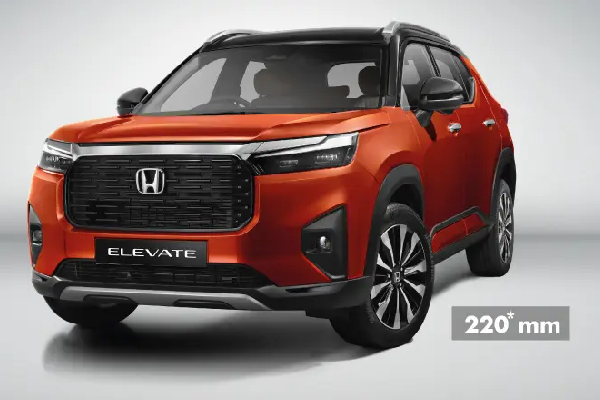 SUV
SUVALL New Elevate
-
 SEDAN
SEDANNEW CITY e:HEV
-
 SEDAN
SEDANNew Amaze



